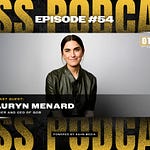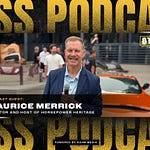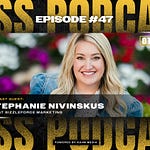Juro Kusnir fell in love with Alaska after spending a summer working at a fish processing plant during a school work exchange program. Everything about the 49th state was completely different from his native Slovakia, and he was captivated by its natural beauty, people and wildlife. Juro would return to Alaska multiple times to continue working at the fish processing plant and to explore its rugged landscapes.
Alaska is also well-known for its salmon, halibut and black cod. During his multiple trips to the state, Juro became very familiar with bringing back filets of each to his friends in the Lower 48. After meeting his wife Adra at a conference in Chicago, the duo decided to turn Juro’s fresh fish delivery hobby into a business. Juro and Adra launched Alaska Fresh in 2018 to bring high-quality fresh and wild-caught Alaskan fish right to people’s doors anywhere in the United States.
Since its launch six years ago, the business has rapidly grown, but it hasn’t always been easy. On this episode of “Only The Strong Survive,” host Dan Kahn discusses the entrepreneurial journey of Alaska Fresh with Juro and Adra. Listen to the full episode as Juro and Adra share what they learned about launching and running their unique business. Here are our top five takeaways:
Starting small and then scaling up is a less risky growth model.
Customer convenience should always come first.
Supply chains and logistics need to be carefully addressed.
Your products need a unique selling proposition to differentiate them.
Word-of-mouth marketing only goes so far.
Starting Small Helps
While food delivery services are common now, that wasn’t the case when Juro and Adra launched Alaska Fresh in 2018. They weren’t sure what the demand would be or if their business model would be successful. However, starting Alaska Fresh initially as a side business and on a smaller scale helped mitigate risk. If the company failed, they still had jobs and wouldn’t be out huge sums of money.
“Now, with Shopify, Wix, GoDaddy and whoever else, it is fairly easy to build a website. You don’t have to quit your job and raise $100 million to start a company with a whole team of people,” says Juro. “You can probably just go ahead and try it. It obviously depends upon what you want to do, but for a lot of people, you can just do this. So, just go ahead and try it. Dip your feet in it and see what happens.”
Make It Easy for Your Customers
Juro and Adra could have taken multiple paths when starting Alaska Fresh. However, the duo decided to go directly to the consumer through an e-commerce site. This was easier for Juro and Adra to set up and also the most convenient for the consumer. When you are trying to sell higher-priced items that a customer doesn’t necessarily need, the process needs to be as simple and streamlined as possible.
“The idea from the very beginning was to allow people who are far away from Alaska, far away from a source of excellent wild seafood, to make it simple, convenient, affordable and easy for them to get that,” says Juro. “E-commerce was the easiest thing to build, but it was also very convenient for the customer. Back in 2018, it wasn’t common to go online and find wild Alaskan salmon, halibut or sablefish and buy a box of it or get a subscription and get it delivered to your door. It was a relatively new idea at the time.”
Your Supply Chain is Vital
Supply chains often get overlooked but are absolutely vital to any business. This is especially true of an upstart business selling perishable items that could make people sick if not kept at the proper temperatures. Juraj’s background in fish processing gave him valuable experience, but he still had to find the right partners and techniques to keep his products moving. Operating out of Cordova, Alaska, which is only accessible by boat or plane, complicated logistics even further.
“What really helped was that I had so much experience working with fish. I knew what I could and couldn’t do and what I needed to do to keep the quality at the top level. That was a great base, but after that, there was trial and error in the process to find the most affordable, safest and quickest way to get the fish to me,” says Juro. “Alaska Airlines is the best airline to ship perishable products because they understand what it is and how important and valuable it is. Basically, the only layover we get is in Seattle, and whenever there is a layover, they have a freezer where all our products go.”
Product Differentiation is Paramount
Differentiating your products from others is critical to the success of an upstart business. Yes, you can buy salmon, halibut and other fish from almost any grocery store, but it is more than likely farm-raised and low-quality. Alaska Fresh sells wild-caught fish that are properly processed and quickly preserved. The result is a premium product that tastes amazing, allowing Alaska Fresh to carve out its own market niche. Telling that story is just as important to today’s consumers, too.
“People want to know our story. They want to see it (Cordova) on the map. They want to know who the fisherman is, the name of the boat, and what is the timing of how long the fish is out of the water until it is processed,” says Adra. “I think with everyone spending more time on social media and seeing these stories come up and having lived that experience of having chickens and foraging for their own food, they know they can access that information. Consumers really expect it now.”
Organic Growth Has Its Limits
The quality of Alaska Fresh’s fish spoke for itself, and in the beginning, Juraj and Adra did little marketing. Word of mouth and happy customers were enough to keep their business growing at a rate they were happy with. However, organic growth has limits, as word of mouth only spreads so far, and new competitors enter the market trying to take a chunk of Alaska Fresh’s sales. Even with an excellent product, you will have to invest in marketing.
“Sales and marketing are what we are working on the most now. It is building a good strategy and really continuing and accelerating our growth. The growth that we’ve been experiencing over the last six years has been mostly organic and word of mouth. That is what motivated us to go all in now,” says Juro. “The year our baby was born, we doubled our sales without trying to do that. We figured if we can go all in this year, we can make it work.”












